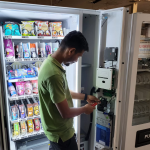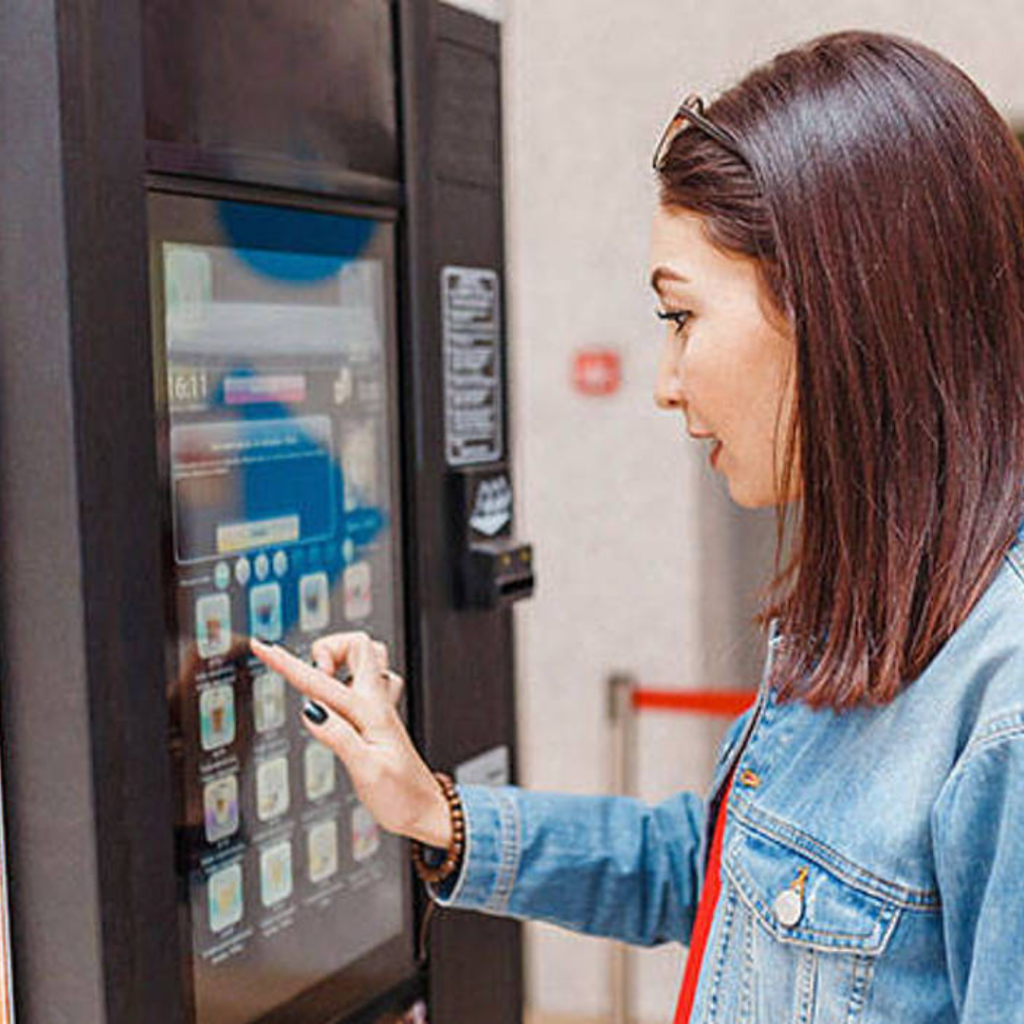The Entrepreneur’s Guide to Starting a Vending Machine Business

The vending machine business has always been an intriguing prospect for budding entrepreneurs. The allure of passive income, combined with the opportunity to serve a variety of markets, is hard to resist. But before embarking on this journey, one must consider the myriad elements involved, not least of which is the vending machine cost.
Market Research: Identifying Opportunities
Commencing a venture without adequate market research is akin to setting sail without a compass. In the world of vending machines, understanding customer preferences is paramount. Is the target demographic more inclined towards health snacks or sugary treats? Are cold beverages in demand, or is there a niche for gourmet coffee?
Tactical deployment of a few pilot vending machines can provide invaluable insights. Monitoring these machines helps identify top-selling products and fine-tunes inventory planning. Further, engaging with customers through feedback forms or casual interactions can reveal market trends, ensuring that the business remains ahead of the curve.
It’s also worth noting that market demands are ever-evolving. Seasonal variations, emerging health trends, and even local events can sway purchasing patterns. Hence, periodic market reviews should be integral to the business strategy, ensuring adaptability and sustained profitability.
Estimating Initial Investment: Understanding Vending Machine Cost
The initial investment isn’t solely about the vending machine cost. Several other factors come into play. There’s the expense of inventory, periodic maintenance, and potential software solutions for tracking sales.
Vending machine prices can vary widely. While newer models with advanced features are pricier, they offer functionalities that can enhance the customer experience. On the flip side, a used machine might be more budget-friendly but may come with increased maintenance woes. It’s essential to strike a balance, considering both the initial cost and potential long-term expenses.
Furthermore, ancillary costs can’t be ignored. These include potential licensing fees, rental for machine placement, and even electricity charges. Drawing up a comprehensive business plan can illuminate these costs, offering a clear roadmap for potential investors and stakeholders.
Business Registration & Legalities
Stepping into the vending machine business requires more than just understanding the market and vending machine costs. It’s vital to stay on the right side of the law. This involves registering the business, acquiring necessary permits, and ensuring adherence to health and safety regulations.
Different states or regions might have specific requirements, especially concerning the sale of food and beverages. Delving deep into these prerequisites prevents potential legal hassles down the line. After all, legal entanglements not only prove costly but can also tarnish the business’s reputation.
Additionally, insurance is an aspect that shouldn’t be overlooked. Protecting the business from potential damages, thefts, or even lawsuits can save a ton of heartache in the future. It’s always better to be prepared than be caught off-guard.
Selecting the Right Vending Machines
Choosing the perfect vending machine is much more than just considering the vending machine cost. It’s about understanding the target demographic, the products on offer, and the locations in play.
Modern machines are a marvel, offering touchless payments, digital interfaces, and even energy-saving modes. Such features not only enhance the customer experience but can also result in long-term savings. Then again, a used machine might suffice for a startup, especially when working with a tight budget.
Additionally, the machine’s size and capacity are crucial. For high footfall areas, opting for larger machines that require less frequent restocking might be ideal. Conversely, compact machines might be perfect for niche markets or locations with space constraints.
Strategic Location Selection
A vending machine’s location can either propel it to success or doom it to obscurity. High footfall areas, like transport hubs or office complexes, seem like the obvious choice. But one must also factor in the associated rental costs.
Negotiating favorable terms with property owners can significantly boost profitability. Also, consider locations with a captive audience – waiting rooms, employee break areas, or even educational institutions. These spots might not see massive crowds but offer consistent sales.
Beyond just footfall, understanding the demographics of the visitors is invaluable. A gym might require health snacks and electrolyte beverages, while a college might see higher sales of energy drinks and quick snacks. Tailoring product offerings to the location can significantly enhance sales and profitability.
Inventory Management: Stocking & Restocking
Effective inventory management ensures that the machine is always stocked, minimizing the chances of missed sales opportunities. Regularly monitoring stock levels and understanding sales trends helps in efficient restocking.
Inventory management isn’t just about quantity but also variety. As market trends evolve, the product mix within the vending machine might need alterations. For instance, during summers, beverages might see higher sales. Similarly, during exam seasons in colleges, energy drinks or coffee might be in higher demand.
Additionally, foster strong relationships with suppliers. This can lead to bulk discounts, insights into new products, and even favorable credit terms. Implementing inventory management software can also streamline the process, ensuring that the business remains agile and responsive to market demands.
Operational Considerations: Maintenance & Upkeep
Vending machines, though largely autonomous, require periodic maintenance. Regular cleaning, software updates, and mechanical checks ensure that the machines function optimally.
A machine’s aesthetic appeal is as crucial as its functionality. A clean, well-lit machine is more inviting and exudes reliability. Scheduled maintenance checks, both for the software and hardware components, can preempt potential breakdowns, ensuring minimal downtime.
In the event of
a malfunction, having a swift response system is essential. Collaborating with reliable technicians ensures that any hiccups are swiftly addressed. After all, a non-functional machine doesn’t just result in lost sales, but can also erode customer trust.
Marketing & Promotion: Boosting Your Vending Machine’s Visibility
In an increasingly digital age, even traditional businesses like vending machines can harness the power of digital marketing. Initiatives like QR code promotions, loyalty programs, or even machine wraps can significantly enhance visibility.
Local collaborations can also spur sales. Consider partnering with nearby stores or businesses for cross-promotions. Limited-time offers or seasonal discounts can also attract more customers, ensuring that the vending machine remains top-of-mind.
Social media shouldn’t be ignored. Regular posts showcasing new products, customer testimonials, or even fun facts about vending machines can foster a sense of community. Engaging content not only boosts sales but also establishes brand loyalty.
Review & Adapt: Evaluating Your Business Performance
Periodic business reviews are the cornerstone of long-term success. Understanding sales trends, gauging customer feedback, and assessing the profitability of each vending machine provides crucial insights.
These reviews can lead to strategic shifts. Perhaps a particular machine isn’t performing optimally due to its location. Or maybe the product mix needs a revamp. Data-driven decisions ensure that the business remains agile, adapting to changing market dynamics.
Additionally, feedback channels, be it online reviews or direct customer interactions, can illuminate areas of improvement. An agile business model, willing to pivot based on data and feedback, ensures sustained growth and profitability.
Scaling Up: Expanding Your Vending Machine Empire
Once the initial vending machine garners success, it’s time to think bigger. Expansion might involve increasing the number of machines, diversifying product offerings, or even exploring new markets.
Adding machines to existing profitable locations is a logical first step. But branching out to new locales, or even venturing into specialized vending (like tech gadgets or luxury products), can open up new revenue streams.
Franchising is another avenue worth exploring. By leveraging the brand’s success and offering potential franchisees a proven business model, rapid expansion is possible. But while scaling, it’s essential to maintain consistent service and product quality, ensuring that the brand’s reputation remains untarnished.
Conclusion: The Road Ahead for Your Vending Machine Business
Embarking on the vending machine business journey promises both challenges and rewards. With diligent market research, astute understanding of vending machine costs, and an unwavering commitment to customer satisfaction, success is not just a possibility, but a guarantee. As the business landscape evolves, the vending machine industry remains a testament to the timeless appeal of convenience and innovation.














